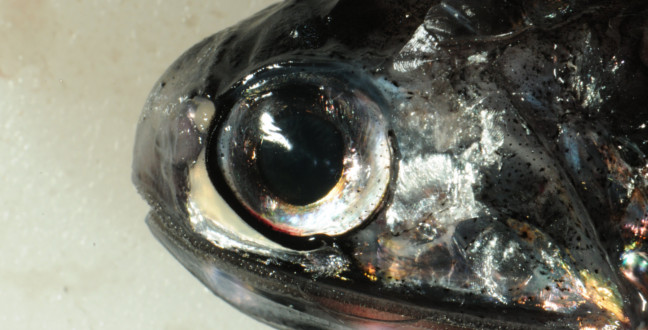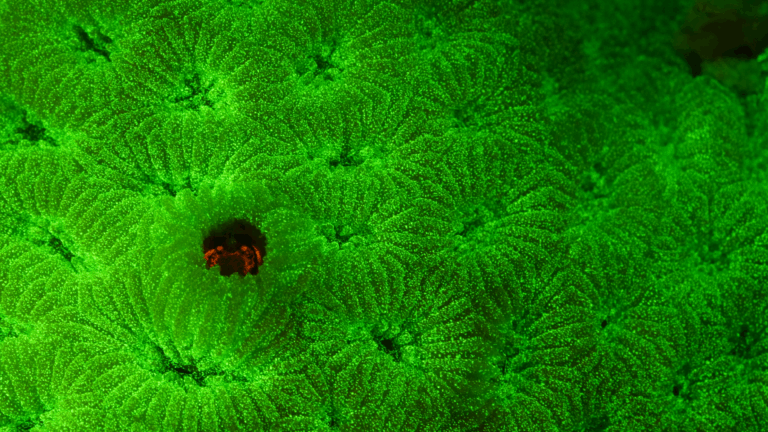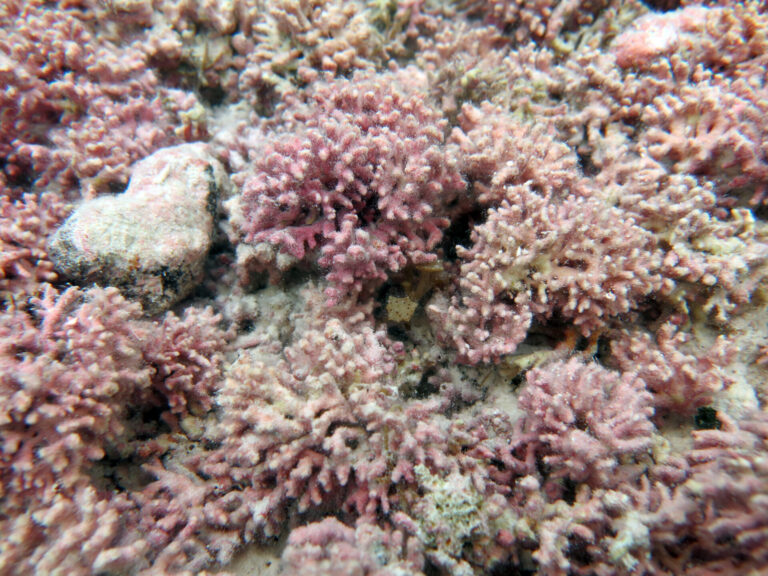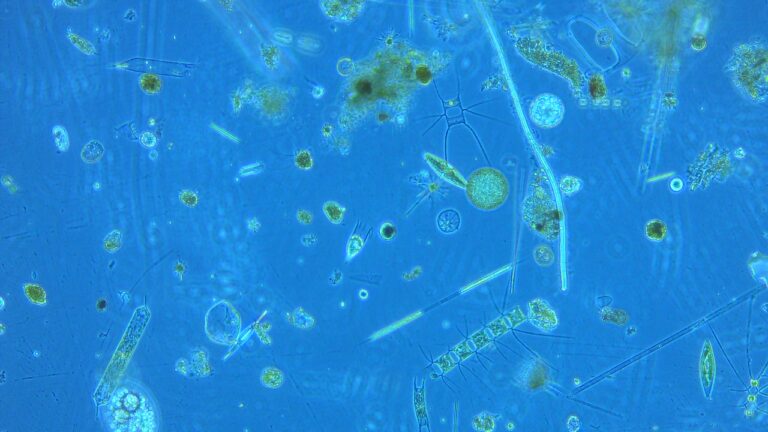Marine Science
Plenty more fish in the deep sea
Mysterious deep dwelling fish are vastly more plentiful than previously thought and are likely to play a major role in ocean carbon budgets.


A mesopelagic fish eye and the luminous organ which can emit light indirectly for these deep dwelling creatures
© Red Sea Research Center
As sailors traverse the world’s oceans, the sonar on their vessels reveals a thick layer that changes depth throughout the day. This ‘deep scattering layer’ puzzled mariners until 1948 when it was shown to be a dense layer of fish whose global biomass is about a billion tons. An international study now suggests that previous estimates of these fish have been significantly short; they may comprise 95 percent of the world’s fish mass and have a dramatic influence on oceanic chemical cycles.
Mesopelagic fish live in the ocean’s dimly lit ‘twilight’ zone at depths between 200 and 1,000 meters. At night, they swim toward the surface to feed on planktonic animals: during the day they migrate downward where they excrete and respire. Although probably the most abundant vertebrate in the world, these fish have been largely under researched.
“These fish are difficult to study because they live so deep and we know so little of open ocean ecology,” explained Xabier Irigoien, director of the Red Sea Research Center at KAUST.
Previous attempts to net the fish for studies had proved futile with the fish easily able to detect and avoid trawl nets. So an international team of scientists collected fish data, through echo sounders and sonar, during daylight hours of a seven month circumnavigation of the globe. They developed a sensitivity analysis of acoustic data which was then corroborated by an existing food web model called ECOTROPH. These showed that the mesopelagic fish mass is at least ten times greater than previous estimates from trawling observations1.
The revised number indicates mesopelagic fish may play a larger role in energy transfer up the food chain from planktonic animals to bigger predators. It challenges the picture of the deep ocean as a void if it is able to support efficient food webs.
These findings also challenge our understanding of ocean carbon budgets. After feeding near the surface, mesopelagic fish swim down into the ocean, effectively transferring surface carbon deeper to the mesopelagic region. They also remove much of the oxygen from the depths through respiration.
“We now understand the transport of CO2 from the surface to deeper waters better,” says Irigoien. “We also understand how large predatory fish like tuna live in the open ocean where they can feed on those mesopelagic fish.”
Irigoien outlined future studies to learn how ammonium, oxygen, and bacterial activity change in the twilight zone to better understand the role of mesopelagic fish in biogeochemical cycles of ocean ecosystems.
References
- Irigoien, X., Klevjer, T.A., Rostad, A., Martninez, U., Boyra, G., et al. Large mesopelagic fishes biomass and trophic efficiency in the open ocean. Nature Communications.5, 3271 (2014). | article
You might also like

Marine Science
Tiny crabs glow to stay hidden

Marine Science
Mass fish deaths linked to extreme marine heatwave in Red Sea

Marine Science
Weeding out the secrets of Red Sea macroalgae

Bioscience
Digging into the world of plant-growth-promoting microbes

Marine Science
Rhodoliths found in a surprise location

Bioscience
Unique microbiome discovered in mountain streams

Marine Science
Examining phytoplankton’s past to reduce future algal blooms

Marine Science



